Abbreviations
- ICAO – International Civil Aviation Organization;
- KQ – Kenya Airways;
- TTF – Trend Type Forecasts;
- TAF – Terminal Aerodrome Forecast;
- AIR ACCIDENT – An occurrence during the operation of an aircraft, which entails:
- A fatality or serious injury;
- Substantial damage to the aircraft involving structural failure or requiring major repair of the aircraft; or
- The aircraft is missing.
- HARZADOUS WEATHER – Weather that exceeds the pilot/aircraft capabilities.
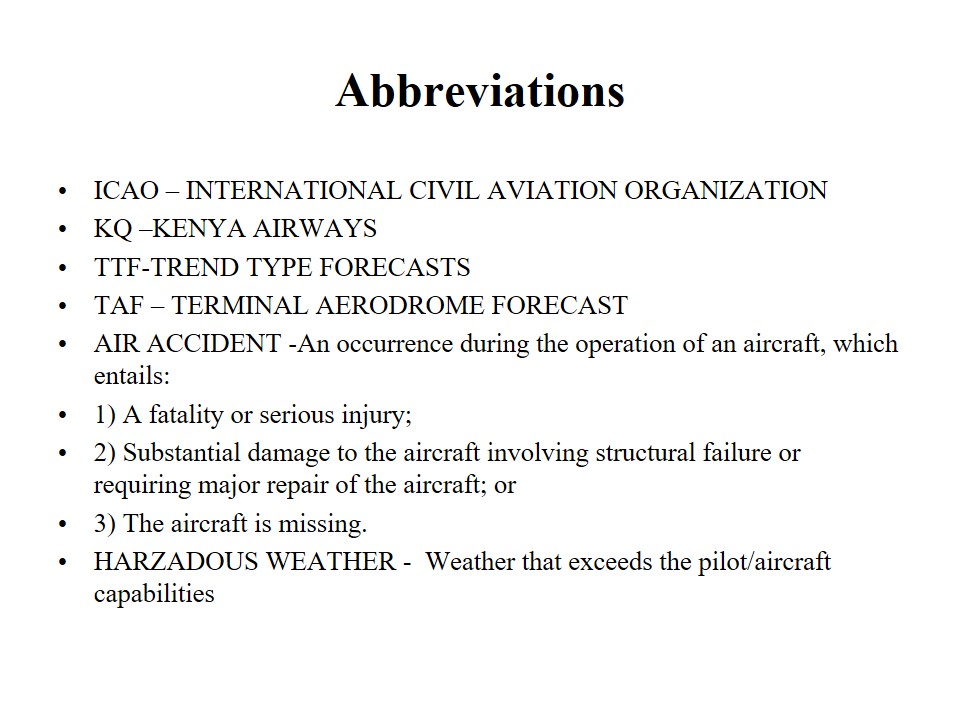
Introduction
Since the flight by Wright brothers early in 20th century, the aviation industry realized the close knit between weather and flying. Adverse weather has major impacts on safety, efficiency and capacity in aviation operations. Adverse weather includes low level wind shear, visibility, thunderstorms, icing turbulence in cloud and in clear air. The hazards reduce the safety margins and increase the occurrence of incidents which could result into accidents.
Even with technological evolutions, weather-related aviation accidents, in both commercial (i.e., commuter, transport category) and General Aviation (GA) industries still remain one of the most significant causes for concern in aviation safety today.
Weather strongly affects the entire air traffic control system. Accidents, flight delays, airport operations, and fuel economy are only a few of the more significant factors in air transportation that are affected directly by weather phenomena.
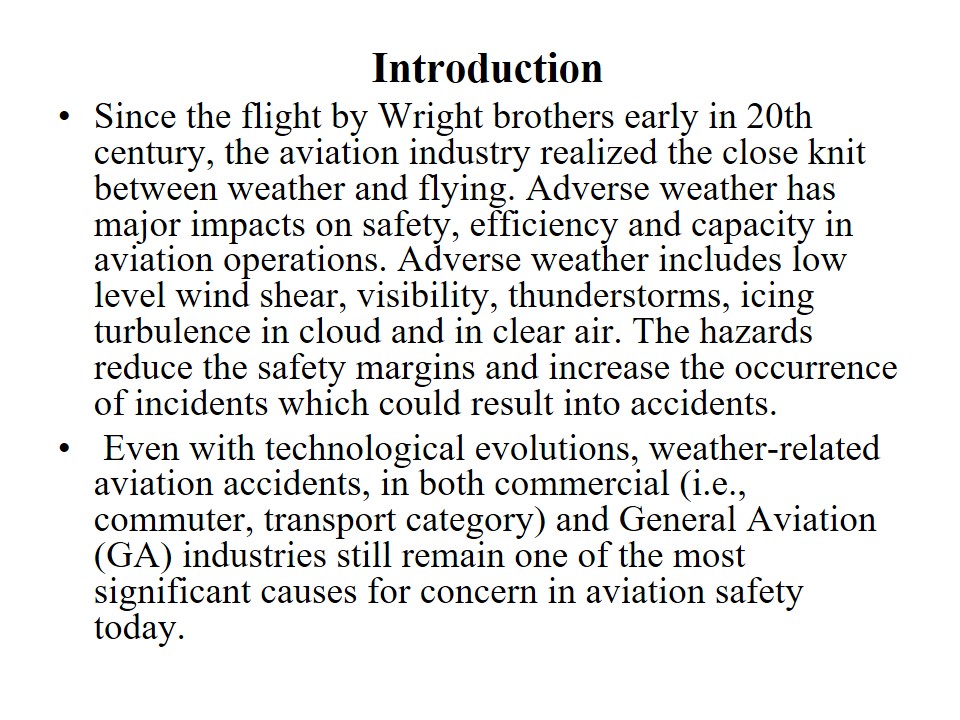
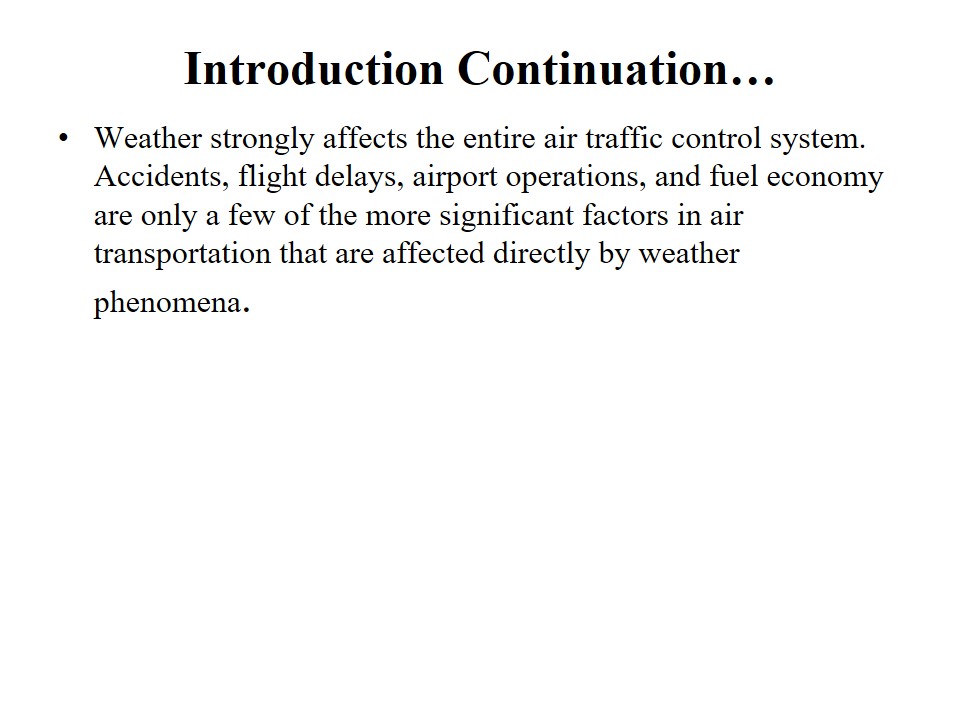
Problem Statement
Daily and globally, there are many aviation operations affected by weather including incidents and accidents Kenya has its own share of aviation accidents. Severally, accident investigation reports indicate weather to be a contributor to aircraft accidents. However, very few studies if any exist in Kenya which address the problems related to aircraft hazards, incidents and accidents related to adverse weather.
Problem- What users say
- Develop and test an accurate and efficient aviation forecast system;
- Avail precise and accurate weather observations/ forecasts for flight planning;
- Provide more detailed en-route weather to General Aviation flight operators and create a mechanism for improved services delivery/
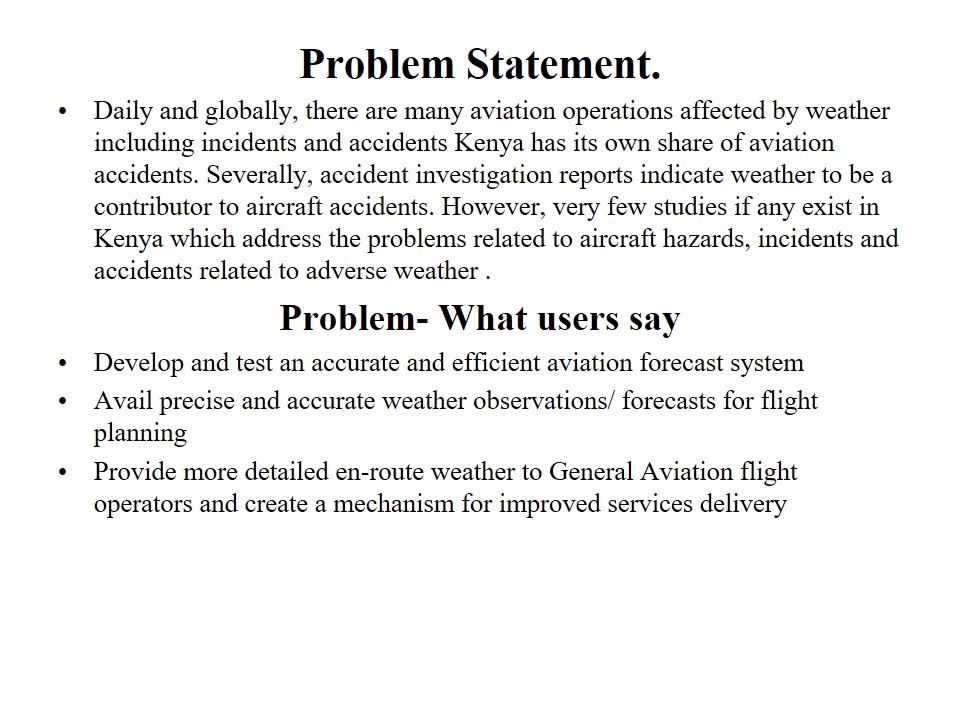
Justification
Studies to improve the availability of strategic and tactical aviation weather information and its presentation to pilots can enhance weather situation awareness and enable avoidance or preparedness of adverse weather conditions. The vulnerability of aircraft to weather related disasters in Kenya has not been dramatically highlighted mainly due to lack of related relevant studies by local research Institutions or weather/climate centers.
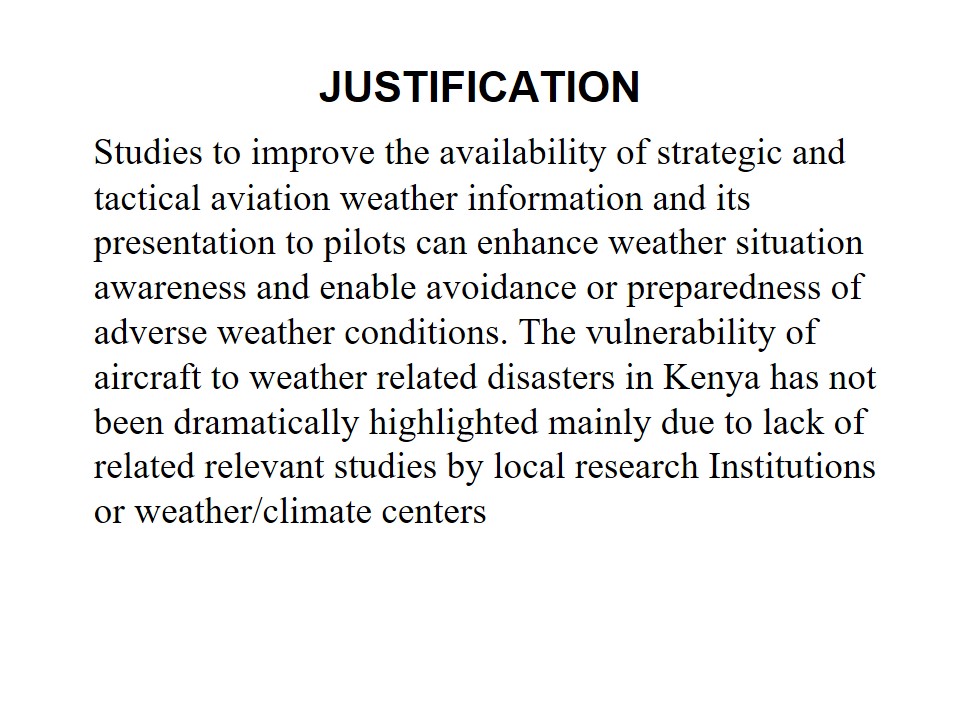
Objectives Of The Research
Overall – Quantify the significance of adverse weather in aviation operations and economics at JKIA.
SPECIFIC:
- Identify aviation weather hazards that affect operations at JKIA.
- Evaluate the aviation meteorological products acceptability and usability.
- Review present forecasting techniques at JKIA in comparison to other global centres.
- Examine the accuracy of the aviation forecasts at JKIA.
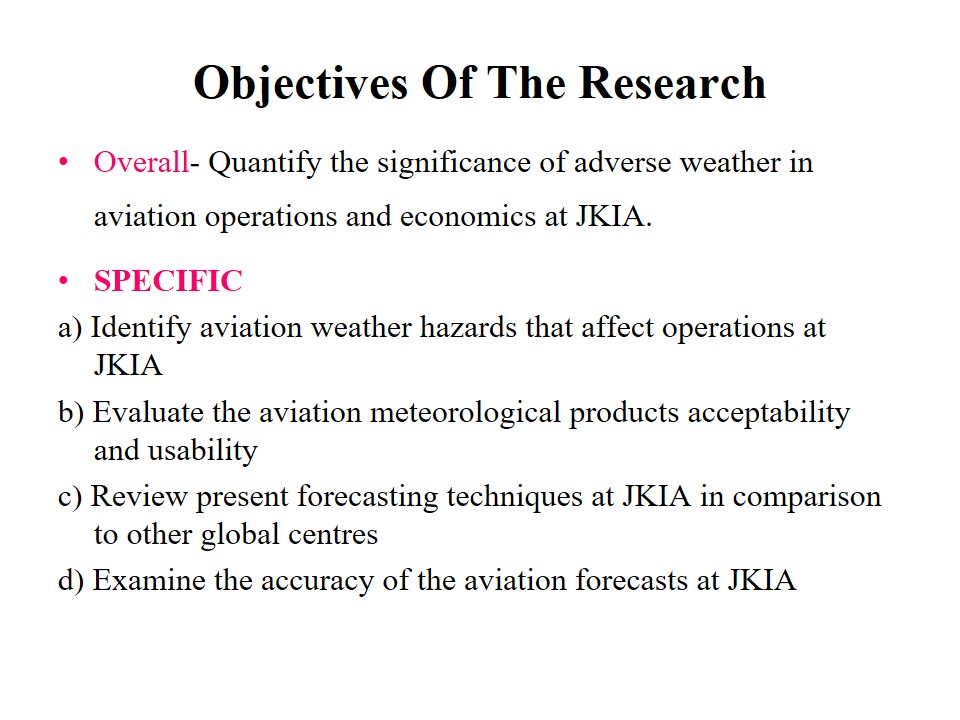
Area Of Study
There are several airports in Kenya. Three of them have international classification while others are either military or in General Aviation category.
This study will concentrate on JKIA due to its strategic importance locally, regionally and internationally.
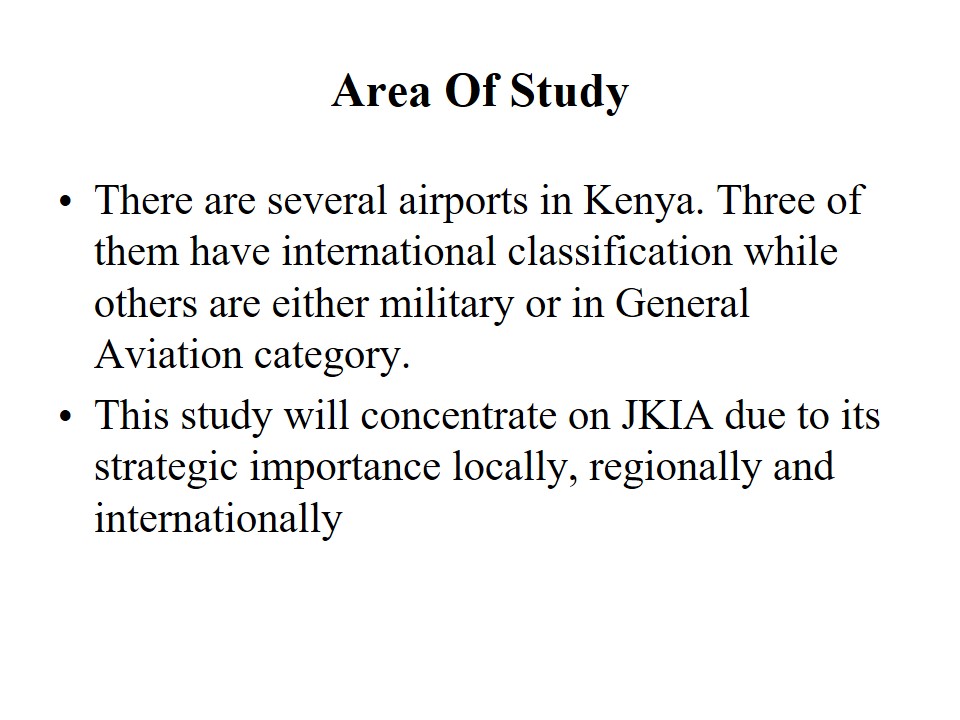
Literature Review
The Federal Aviation Administration’s (FAA’s) National Aviation Safety Data Analysis Center (NASDAC), in a study using the National Transportation Safety Board (NTSB) accident database discovered that in the 10 yr prior to 2003, there were 19,562 aircraft accidents. Weather was a contributing or causal factor in 4,159 (21.3%) of these accidents, with 41.2% of all weather-related accidents having no record of the pilot receiving a weather briefing.
Three aircraft accidents were examined for a span of one year using weather radar in United States by Fujita. In his analysis using the weather radar echoes; a manifestation of a thunderstorm activity was observed between five to fifty minutes before all the three aircrafts accidents. He also found out that all the accidents occurred as the aircraft were either descending or climbing, lost altitude while experiencing strong wind shear and inside downburst cells. (Fujita, 1997).
A quantative study of weather impacts on aviation in Germany was carried out to identify thunderstorms as the cause of aircraft delays. Days without thunderstorms were used for reference and the difference in delay time was determined (Hauf,2003).
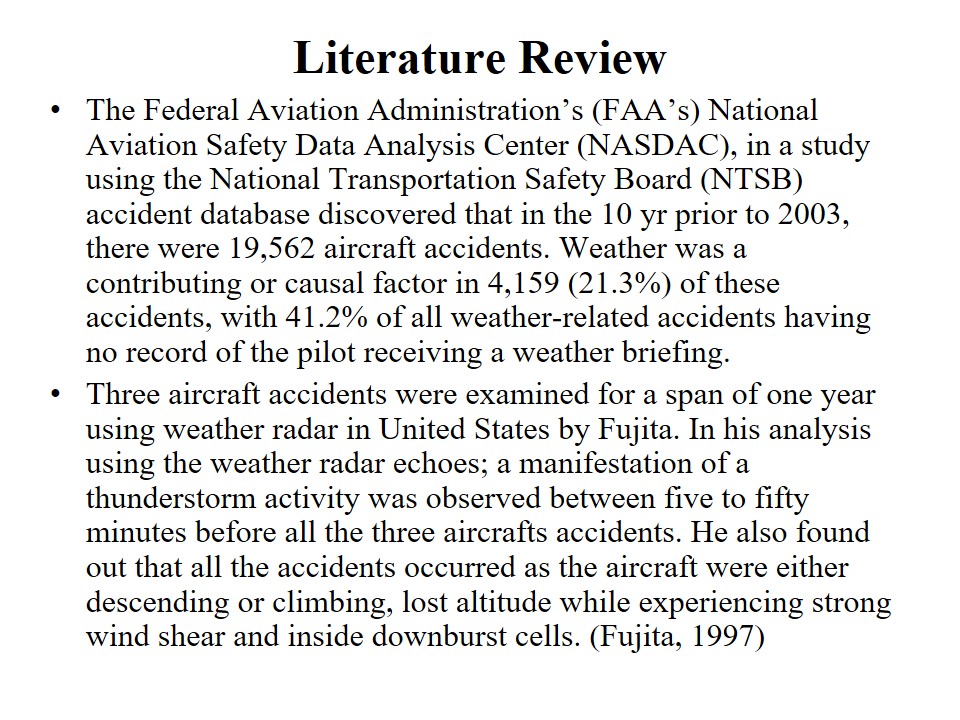
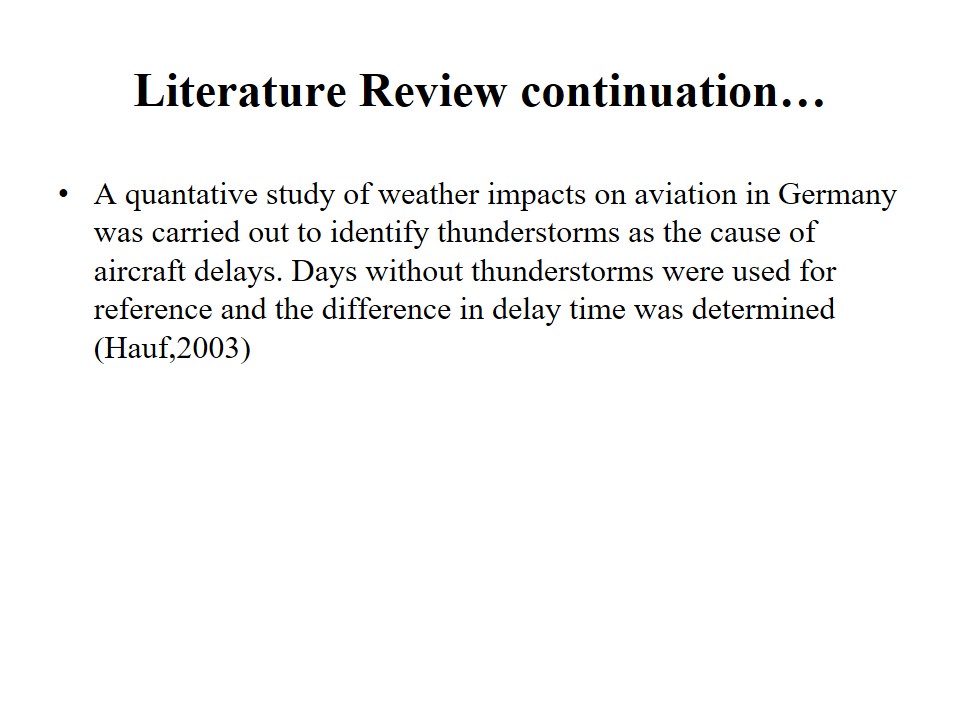
Data and Methodology
Aviation Data
Ten year aircraft data which have been affected by adverse weather which will include Aircraft accident/incident data, Aircraft Delay due to Hold ups, Aircraft delay due to Diversion. Flight data will be provided by the Kenya Civil Aviation Authority which include, type of aircraft, flight number and scheduled flight data provided by the airlines. In case of aircraft accident/incident at JKIA, data will be obtained from Ministry of Transport, Air Accident Investigation records.
Weather Data
- Ten year of adverse weather data will be obtained from Kenya Meteorological Department climatological section which include METAR and SPECIAL WEATHER REPORTS (SPECI). Ten year period of meteorological data will be used in order to provide the most current data as well as allow for sufficient sample size.
- 8 months Forecasts for TTF and TAFS will be obtained from JKIA Met Offices.

Methodology
- Information of various aviation weather hazards will be analyzed including thunderstorms, Low level wind shear, heavy rainfall, visibility and ceiling. Each weather hazard will be correlated with aircraft’s (KQ) weather minimum operating limitations.
- A survey instrument.
- Standard verification methods (ICAO Annex3).
- Use of contingency table.
- Correlation Analysis.
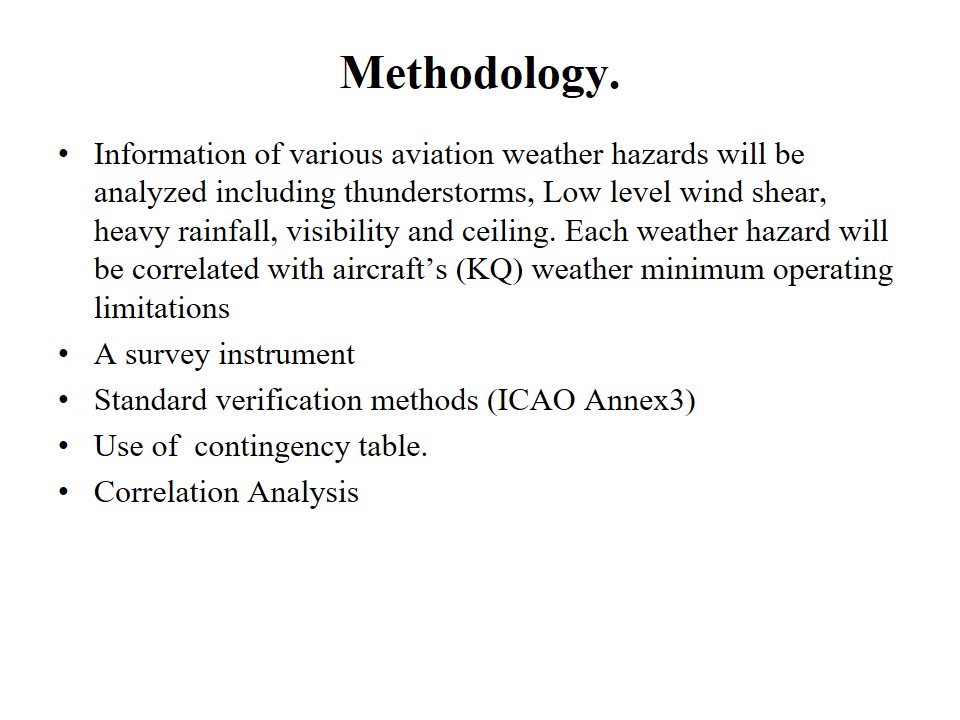
Expected Results
- Identify major sources of errors in aviation forecasting.
- Recommend suitable ways of reducing the errors and increase accuracy.
- Improve user confidence in the products.
- Suggest follow-up studies.
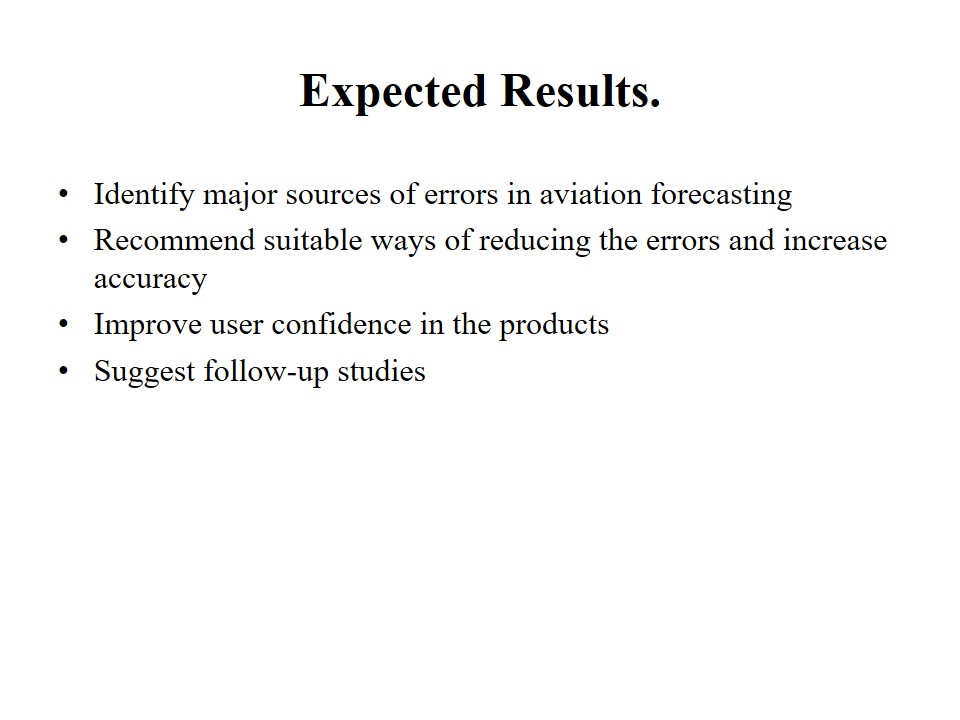
Time Frame
- Nov 2010 – Proposal presentation.
- Feb 2011 – 1st Progress report.
- May 2011 – 2nd Progress report.
- Aug 2011 – 3rd Progress report.
- Dec 2011 – Final Research Report presentation.
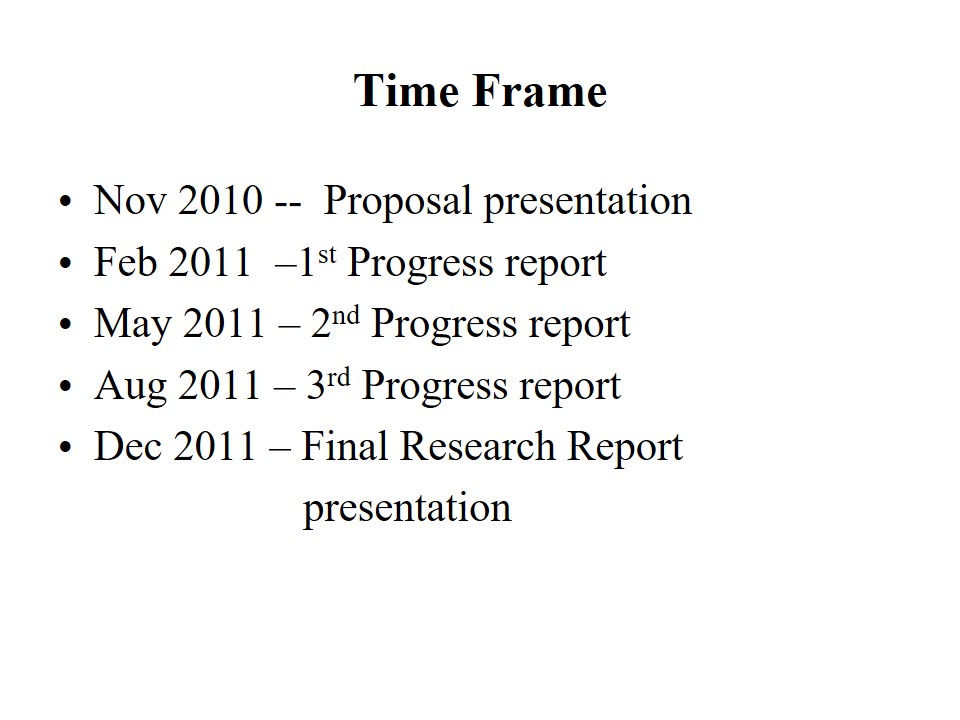
Budget
- Proposal $700.00.
- Data Retrieval including field surveys/assistance $1,500.00.
- Data Analysis $7,000.00.
- Report Preparation $5,000.00.
- Total $14,200.00.
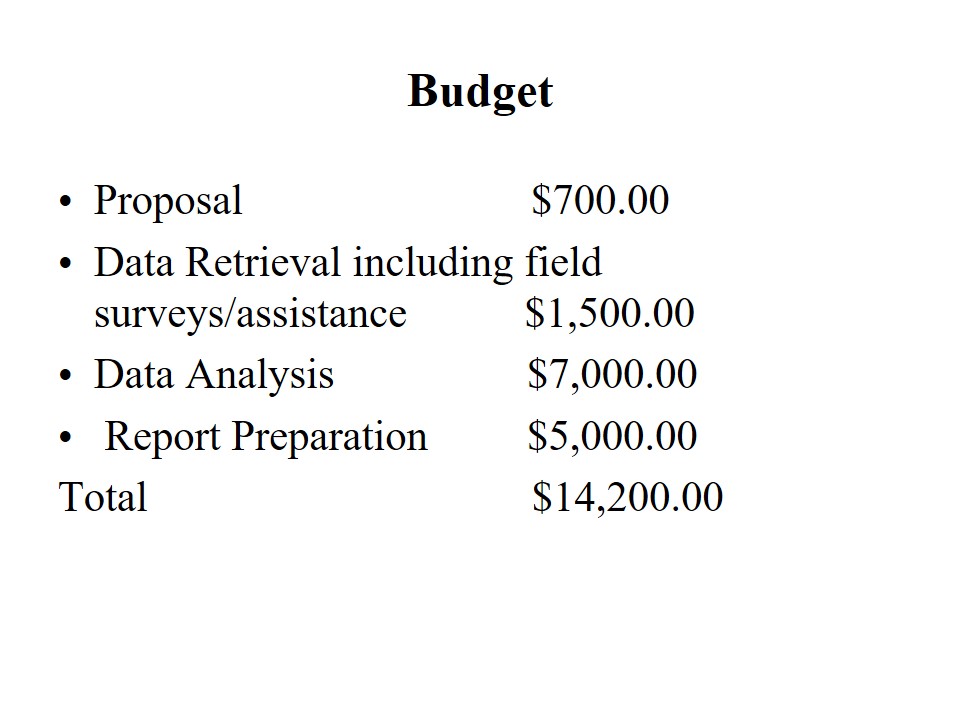
References
Clark T L, Hall D W, Kerr R M, Middleton D, Radke L, Ralph F M, Neiman P J, Levinson D. (2000): Origins of Aircraft-Damaging Clear-Air Turbulence during the 9 December 1992 Colorado Downslope Windstorm: Numerical Simulations and Comparison with Observations, Volume 57, Issue 8 pp. 1105-1131. Journal of the Atmospheric Sciences.
Croft P J, Pfost R L, Medlin J M, Johnson G A. (1997): Fog Forecasting for the Southern Region: A Conceptual Model Approach. Weather and Forecasting, Volume 12, Issue 3 pp. 545-556.
Fujita T T, Caracena F. (1977): An Analysis of Three Weather-Related Aircraft Accidents. Bulletin of the American Meteorological Society, Volume 58, Issue 11 pp. 1164-1181.
Politovich M , Marwitz J, Bernstein B, Ralph F , Neiman P , Ashenden R , Bresch J (1997): Meteorological Conditions Associated with the ATR72 Aircraft Accident near Roselawn, Indiana, on 31 October 1994, Bulletin of the American Meteorological Society, Volume 78, Issue 1 pp. 41-52.
Rhodes S L (1992):Mesoscale Weather and Aviation Safety: The Case of Denver International Airport. Bulletin of the American Meteorological Society Volume 73, Issue 4 pp. 441-447.